Improving Access to Genetic Testing of Neurodevelopmental Disorders
Interview with Dr. Sid Srivastava, Assistant Professor of Neurology, Harvard Medical School
February 2025
The field of neurodevelopmental disorders (NDDs) is advancing rapidly, with an increasing number of genes linked to these conditions as well as a rise in targeted treatments and interventional trials. Despite this progress, precision medicine is challenged by inconsistent genetic testing practices due to variations in the guidelines followed by healthcare providers. This inconsistency leads to significant disparities in access to genetic testing.
To address this issue, leaders from the National Intellectual and Developmental Disabilities Research Center initiated a working group dedicated to surveying the accessibility of genetic testing. Drs. Sid Srivastava (Boston Childrens), Colleen Campbell (University of Iowa) and Jordan Cole (University of Colorado), key contributors to this working group, have played a pivotal role in coordinating this recent study, “Survey of the Landscape of Society Practice Guidelines for Genetic Testing of Neurodevelopmental Disorders,” published in the Annals of Neurology in November 2024. In this interview, Dr. Srivastava shares insights from their findings and offers recommendations for advancing this crucial agenda.
What prompted the National IDDRC working group* to focus on this topic?
We are part of an IDDRC working group focused on improving access to genomic testing for individuals with neurodevelopmental disorders (NDDs). We are at an exciting point in the field: the number of genes implicated in presentations of NDDs is rapidly growing, and we are starting to see more and more targeted treatments and interventional trials. However, one of roadblocks in the pathway to precision medicine is variability in approaches to genetic testing among different providers following different practice guidelines for NDDs. This variability poses challenges for several reasons. First, if there are differing recommendations for genetic testing for NDDs, insurance companies can deny coverage for one type of test over another, citing a specific guideline which supports their position. Second, there can be confusion among patients if providers from one medical specialty suggest one type of etiological evaluation that differs from that of another medical specialty, which can perpetuate healthcare disparities. Third, there may suboptimal utilization of healthcare costs and resources (genetic counseling visits, physician visits), as well as undue patient burden (time, expense), if individuals undergo a set of genetic tests based on one guideline that has lower diagnostic yield and lower cost-effectiveness compared to another guideline. Therefore, we sought out to create a summary of recommendations for genetic testing of unexplained NDDs from U.S.-based professional society practice guidelines. We also wanted to create recommendations to address some of the challenges highlighted above.
What criteria has been used until now to determine access (or referrals for) genetic testing for people with IDDs?
Currently, there is variability in who gets access to genetic testing. This variability may be related to the specific provider the patient sees, the provider’s specialty, the provider’s familiarity with one set of practice guidelines but not others, the institution from which the patient receives care, and the severity of the patient’s presentation, among others.
What entity(ies) typically set these guidelines?
Practice parameters are guidelines/statements created by major medical societies/organizations to guide clinical management, evaluation, and decision making. For NDDs, there are a number of relevant organizations in the U.S. over the intervening years which have established such guidelines including suggestions about types of genetic tests to consider. These organizations include the American Academy of Pediatrics, the American College of Medical Genetics and Genomics, the American Academy of Neurology, the Child Neurology Society, and the American Academy of Child and Adolescent Psychiatry.
What are the group’s top recommendations for genetic testing?
We have proposed several key ideas:
#1. Professional societies could combine efforts to create a single guideline. We have proposed the formation of a national committee on genetic testing for NDDs, composed of experts nominated by members of relevant professional medical societies across specialties including neurology, psychiatry, developmental behavioral pediatrics, primary care pediatrics, rehabilitation medicine, and genetics. Such an effort would create uniformity in recommendations and allow for timely updates.
#2. Medical societies could formally endorse other societies’ genetic testing practice guidelines. Advantages of this approach include minimizing duplication of efforts and increasing impact of any given guideline. There is precedent for this idea: the American Epilepsy Society endorsed the National Society of Genetic Counselors’ (NSGC) 2023 practice guideline regarding genetic testing for epilepsy.
#3. Medical societies could consider creating/updating practice guidelines for genetic testing separately from guidelines that are disorder-specific and focused on other aspects of diagnosis or management. In many cases, practice guidelines focused on a specific NDD cover multiple aspects of clinical care, from etiological evaluation to symptom management. Separating the etiology/genetic testing component from the rest of the recommendations may facilitate more frequent updates that reflect the rapid changes and advances occurring in genomics/genetic testing.
#4. Medical societies should strongly consider the genetic heterogeneity and phenotypic overlap of NDDs in the development of genetic testing guidelines. There is an increasing number of genes associated with NDDs, and the phenotypic spectrum of many genetic disorders is often expanding. As a result, for individuals with unexplained NDDs and non-specific features, we suggest broad spectrum evaluation with exome sequencing/genome sequencing as a first-line test.
#5. Medical societies could structure their guidelines to inform payer coverage policies that are aligned with clinical best practices. It may be helpful for medical societies to reach out to payers before writing a guideline to learn more about how payers review and incorporate guidelines when writing medical policies. A general understanding of payer perspectives on medical societies’ guidelines can be helpful in the structuring of a guideline that is aligned with clinical best practices.
#6. Genetic testing practice guidelines could specifically address recommendations for improving access among marginalized patient populations. More research is needed on reasons for disparities in access and uptake of genetic testing among marginalized population groups. Societies can acknowledge potential barriers to genetic testing that disproportionately affect marginalized groups. Increased access to telehealth may help decrease barriers to specialized care.
#7. Medical societies with guidelines pertaining to genetic testing should strive to update or reaffirm guidelines every 3 to 5 years. This cadence reflects the rapid evolution of genetic/genomic technologies and basic science discovery. Societies can also endorse more up-to-date guidelines.
#8. An online resource should be created to track ongoing recommendations for genetic testing for NDDs. An online resource would ensure not only that NDD society guidelines include the most updated evidence, but also that clinicians and payers can easily access guidelines.
What do you hope to accomplish with your findings and recommendations?
Establishing a genetic diagnosis in an individual with a NDD has a number of impacts. Families can receive proper genetic counseling on recurrence risk of that disorder. They can reach out to other families who are similarly affected, and they may experience a sense of relief at the termination of the diagnostic odyssey. Knowing the genetic diagnosis can help set appropriate expectations for the future. And perhaps most importantly, there can be changes to medical management, including the possibility of treatments specific to that disorder. Our hope is to improve clinical practice on a national level by reducing variability in genetic testing practices so that individuals with unexplained NDDs whose families are interested in understanding the cause can receive timely genetic testing that incorporates the latest in scientific knowledge about best practices.
What is next?
We would love to enact as many of our recommendations as feasible. We have presented our findings at an IDDRC Seminar Series in November 2024, so that other members of the IDDRC community are aware of our work. Facilitating changes in clinical practice, especially on a national level, requires patience and willingness to listen. We are hoping to meet with representatives from different professional societies to discuss their thoughts/perspectives and brainstorm ways to work together in the future.



